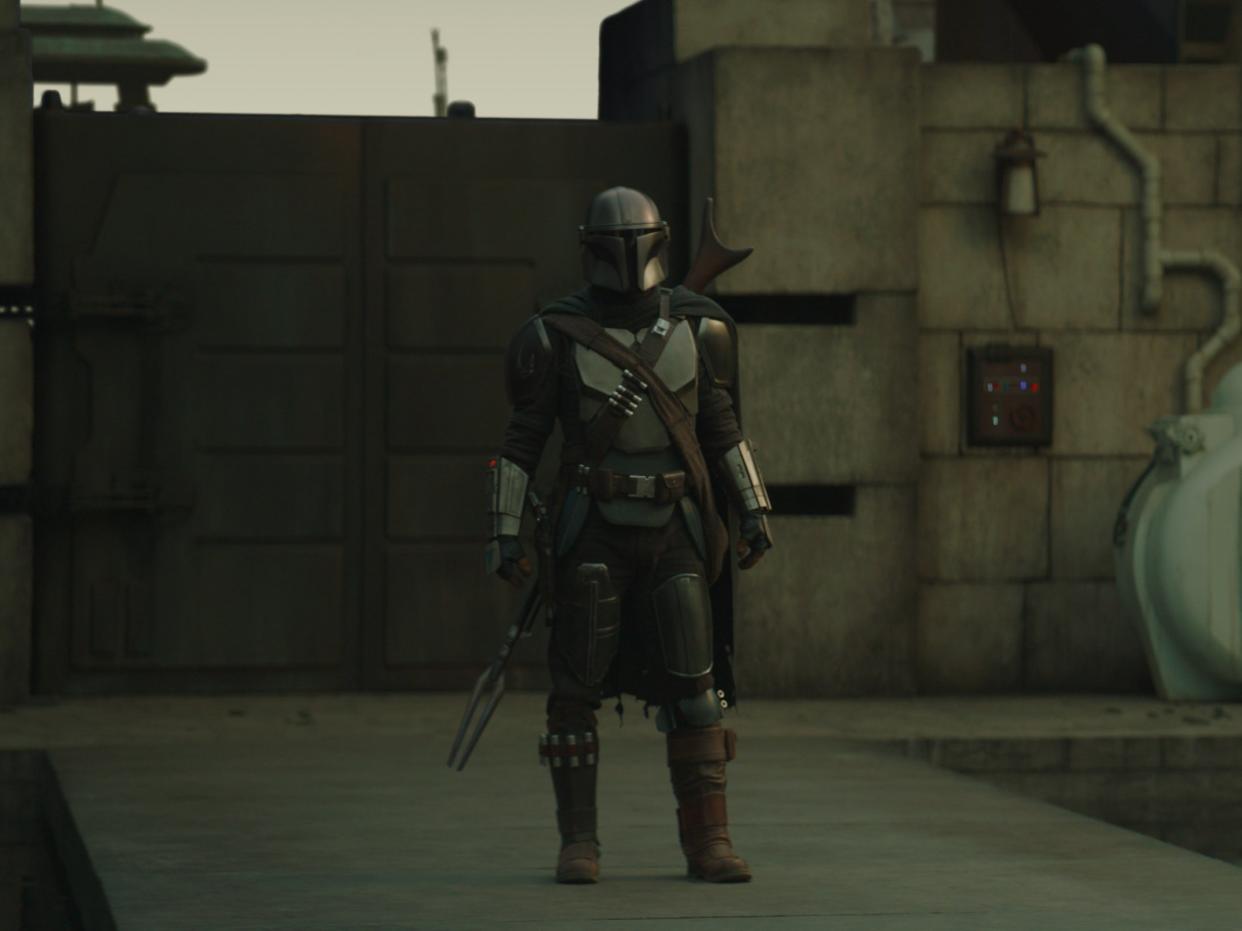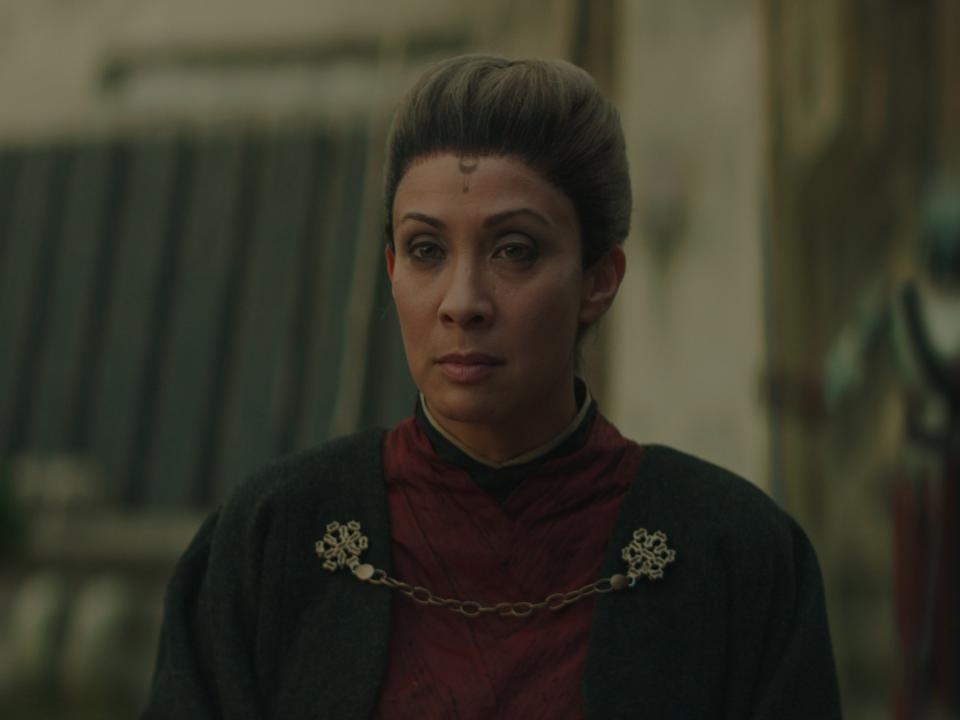The Mandalorian, season 2, episode 5, ‘The Jedi’, review: A Baby Yoda by any other name

- Oops!Something went wrong.Please try again later.
The Mandalorian likes to make its way through the galaxy meanderingly. Since day one, it has assured you there is a bigger picture; it hands out fragments of that picture parsimoniously, pointing at every distraction, urging you to turn your head. “Chapter 13: The Jedi” is a welcome step forward in this regard, delivering a few long-awaited answers and steering its orbit a little closer to Star Wars’ grand mystical core.
The episode opens with Jedi warrior Ahsoka Tano (Rosario Dawson) slashing her way through a group of masked enemies, picking them off one by one with a set of twin lightsabers. We learn she is in conflict with the tyrannical leaders of a small walled community, trying to extract information from their leader, a steely woman known as the Magistrate (Diana Lee Inosanto). As Ahsoka waits to strike again the next night, The Mandalorian (Pedro Pascal) and The Child arrive on the planet, seeking her help.
When Mando and Ahsoka finally meet, she sits down with The Child and communicates with him through the Force. We learn a bit about The Child’s backstory – including the seismic revelation of his name: Grogu. It’s all well and good, but ultimately moot: no matter what the party line may be, he will likely always be known to most as Baby Yoda. Ahsoka, however, refuses to train him, echoing language used by the Jedi masters in The Phantom Menace: there is too much fear in him, and his personal bond with The Mandalorian leaves him vulnerable to insidious human emotions.

Diana Lee Inosanto plays the villainous Magistrate
Lucasfilm Ltd.Though the Jedi order’s carefully delineated rules for emotional repression might appeal to fans of colder, technical sci-fi, the original Star Wars trilogy was fundamentally about human stories – about fathers and sons, betrayal and redemption. While there was some consternation among fans that Disney’s ownership of the franchise would transform it into saccharine commercial pap, episodes like “The Jedi” are as sincerely and effectively heartfelt as anything Star Wars has done. On the other, bloodier side of things, “The Jedi” also features one of the series’ very best set-pieces, as Mando and his force-powered acquaintance attack the Magistrate’s encampment. Lightsaber combat is the flashiest weapon in Star Wars’ dramatic arsenal, and it’s deployed with thrilling elan here.
Hardcore devotees of the franchise are likely to get more out of the story here – nothing is explained about who Ahsoka is, for example, though viewers of The Clone Wars and Rebels will know her intimately as Anakin Skywalker’s former apprentice. Reference to a Grand Admiral Thrawn near the episode’s close is spoken like a detonating plot twist, but for most viewers, it will fall on deaf ears. Amid the zip of blaster fire and electric hum of lightsabers, though, this hardly matters a bit.

